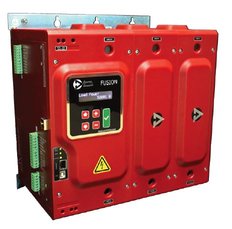 The 10 costliest mistakes associated with SCR controllers
The 10 costliest mistakes associated with SCR controllers
August 24, 2016 REDWIRE is news you can use from leading suppliers. Powered by FRASERS.
Posted by Thermo-Kinetics Measurement & Control Ltd.
For over 50 years, Thermo-Kinetics has stood out from the competition in offering the North American industry the best o... Read more
Subscribe
Free REDWIRE e-newsletter

SCR controllers are solid-state switching devices that offer fast, variable control of electric power. There are many benefits to using these types of units to control your heat process, including improved response time, extended heater life and reduced maintenance costs. But these advantages are only realized if the controllers are properly used. To help get the most out of your SCR controller, avoid these 10 costly mistakes.
1. Over-sizing: Controllers that are unnecessarily large result in additional costs for the controller and the enclosure.
2. Dusty enclosures: Conductive dust inside the cabinet and on the controller will significantly shorten the life of the SCR and electronics. Cabinet filters that are regularly maintained can help reduce dust contamination.
3. Operating above or below rated environmental conditions: The required SCR drive current increases as the temperature decreases. That means that running electronics in a colder environment can over-tax the system and result in misfires and potential saturation of downstream transformers. On the other hand, operating the controller above 50 degrees C shortens the life of the SCR and the associated electronic components.
4. Failure to maintain a minimum load: If a minimum current on the primary is not met, it can cause the SCR to commutate improperly, which could eventually lead to saturation of the transformer and blown fuses.
5. Failure to fuse all legs: Expensive loads can become damaged if there is a short to ground that leads to a runaway load in a single- or three-phase application.
6. Not testing faults: It is important that all possible alarms and fault conditions are systematically tested before being placed in production. This will reduce startup costs and scrapped product.
7. Using a mechanical contactor: Issues can arise when switching loads using a mechanical contactor. For example, if the contactor is opened under power, kickback voltages may be sent to the SCR, causing premature failure.
8. No spares: Though SCRs are known for their years of service when properly used and maintained, they will inevitably fail. When this happens, it is critical to have a spare controller on hand to avoid production losses and downtime.
9. No electrostatic shield: Without the electrostatic shield, AC can couple across the transformer, resulting in measuring a potentially lethal secondary high voltage to earth ground.
10. No mechanical disconnect: SCRs are not mechanical disconnects and do not provide electrical isolation from the line, even when turned off. Failure to follow proper procedures can cost you the ultimate price — your life.
To avoid these costly mistakes, it is critical that you work with experts in the field of SCR controllers. Leading companies like Control Concepts have application engineers expertly trained to ensure SCR controllers are designed to meet the operating needs of the application.
SCR controllers from Control Concepts are available in Canada from Thermo-Kinetics, a Canadian company dedicated to finding solutions for process measurement and control in a wide range of industrial applications.
Share
Posted by Thermo-Kinetics Measurement & Control Ltd.
For over 50 years, Thermo-Kinetics has stood out from the competition in offering the North American industry the best o... Read more
